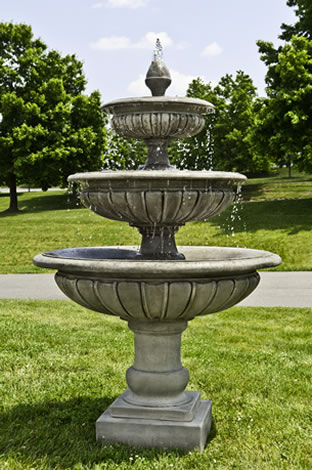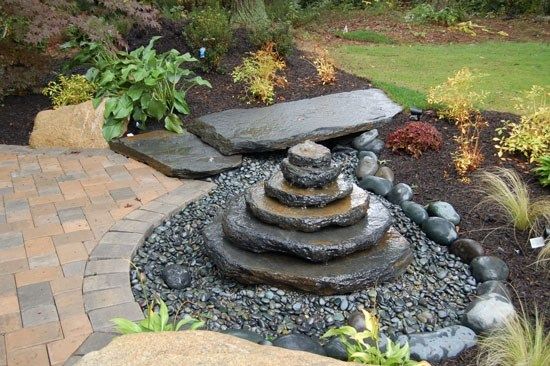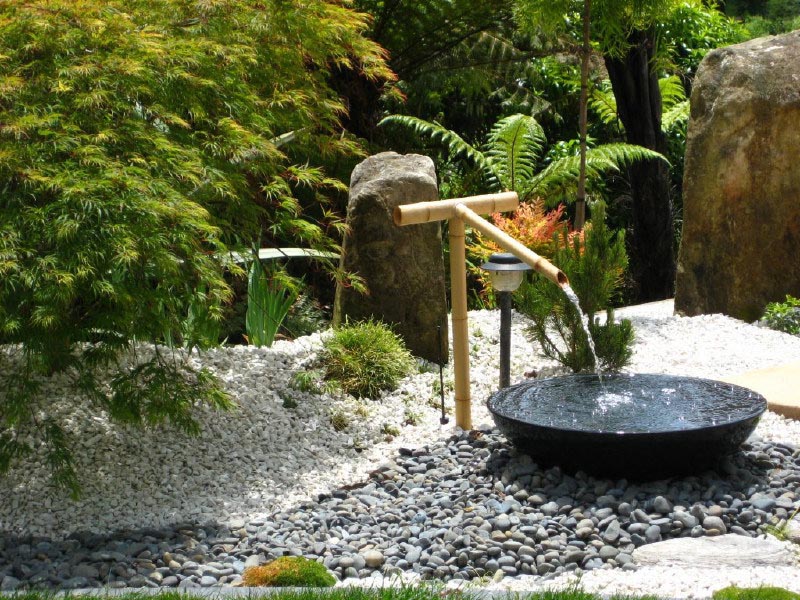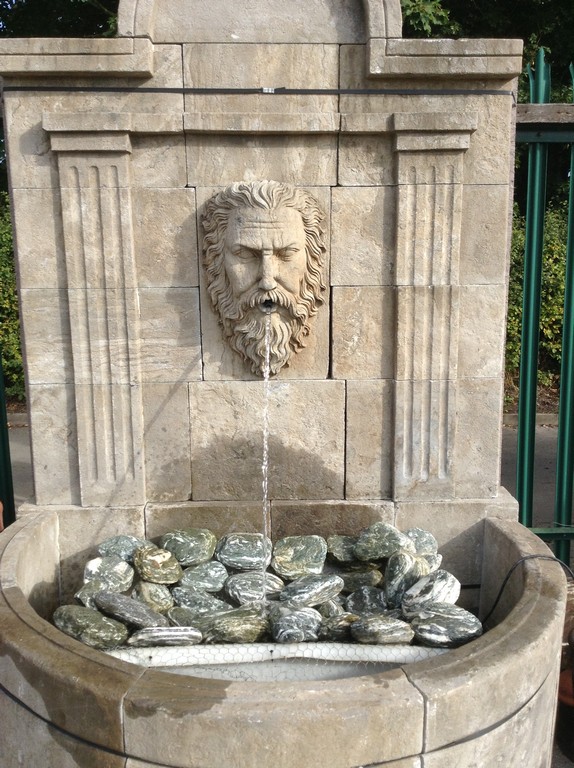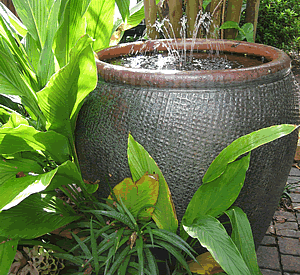Types of garden fountain
Contents |
[edit] Introduction
A fountain is an architectural feature which involves water and is often used as part of landscaping. A fountain can either pour water into a basin to create a ‘waterfall effect’ or spray water into the air to create a ‘jet effect’. Fountains are often used as decorative features in public spaces and gardens.
Fountains are available in a wide range of different styles, sizes and using many different materials, and are often customised according to specific design objectives. Fountains are typically prefabricated, sometimes as a piece of 'sculpture', and delivered to site.
Some of the most common types of fountain found in gardens are described below.
[edit] Tiered fountain
This is a very popular form of garden fountain, particularly in the Mediterranean where they can often be found in courtyards and plazas. A tiered fountain can be designed in a simple form or a more complex one with elaborate carvings, mouldings and other ornamentation. The water is pumped up to the top of the fountain through the core and then cascades down over the tiers to the bottom reservoir where it is recirculated.
[edit] Disappearing fountain
Also known as a pond-less fountain, this type of fountain is characterised by its reservoir which is concealed beneath the ground. This can create an attractive aesthetic when positioned near to a patio or stone path.
The lack of open pond or reservoir means that it is a safe choice for a garden if children are going to be present, but it also uses less water than other fountains since the water belowground does not evaporate. It also requires less space which makes it suitable for small patios and back gardens and it does not need much maintenance since debris and leaves cannot get into the reservoir, and the sun cannot cause algae to grow.
[edit] Japanese fountain
Japanese gardens are characterised by water fountains with the symbolism of spiritual and physical cleansing. They are generally designed simply with water trickling from a spout into a basin which is often made of stone and surrounded by vegetation.
[edit] Wall fountain
This type of fountain is customised to fit a wall and can be either freestanding or wall-mounted. A freestanding wall fountain is often quite large and has a basin that is placed on the ground. Whereas, a mounted wall fountain is built into an existing or new wall. Both types require a spout, basin, internal piping or tubing and a pump.
[edit] Self-contained fountain
This type of fountain is simple and easy to install and maintain. The materials used to make this type of fountain can include cast stone, ceramic, metal, fibreglass, and so on. They contain all the necessary parts that are required to function, including the plumbing and the pump. They can also be self-contained in terms of having their own water reservoir, avoiding needing to be placed close to a water source. The only external component they may require is a power source which can be provided via a solar panel, batteries, electrical outlet, and so on.
Before installing, it is important that the ground where it is to be placed is level and compact.
[edit] Related articles on Designing Buildings
Featured articles and news
Key points for construction at a glance with industry reactions.
Functionality, visibility and sustainability
The simpler approach to specification.
Architects, architecture, buildings, and inspiration in film
The close ties between makers and the movies, with our long list of suggested viewing.
SELECT three-point plan for action issued to MSPs
Call for Scottish regulation, green skills and recognition of electrotechnical industry as part of a manifesto for Scottish Parliamentary elections.
UCEM becomes the University of the Built Environment
Major milestone in its 106-year history, follows recent merger with London School of Architecture (LSE).
Professional practical experience for Architects in training
The long process to transform the nature of education and professional practical experience in the Architecture profession following recent reports.
A people-first approach to retrofit
Moving away from the destructive paradigm of fabric-first.
International Electrician Day, 10 June 2025
Celebrating the role of electrical engineers from André-Marie Amperè, today and for the future.
New guide for clients launched at Houses of Parliament
'There has never been a more important time for clients to step up and ...ask the right questions'
The impact of recycled slate tiles
Innovation across the decades.
EPC changes for existing buildings
Changes and their context as the new RdSAP methodology comes into use from 15 June.
Skills England publishes Sector skills needs assessments
Priority areas relating to the built environment highlighted and described in brief.
BSRIA HVAC Market Watch - May 2025 Edition
Heat Pump Market Outlook: Policy, Performance & Refrigerant Trends for 2025–2028.
Committing to EDI in construction with CIOB
Built Environment professional bodies deepen commitment to EDI with two new signatories: CIAT and CICES.
Government Grenfell progress report at a glance
Line by line recomendation overview, with links to more details.
An engaging and lively review of his professional life.
Sustainable heating for listed buildings
A problem that needs to be approached intelligently.
50th Golden anniversary ECA Edmundson apprentice award
Deadline for entries has been extended to Friday 27 June, so don't miss out!
CIAT at the London Festival of Architecture
Designing for Everyone: Breaking Barriers in Inclusive Architecture.
Mixed reactions to apprenticeship and skills reform 2025
A 'welcome shift' for some and a 'backwards step' for others.







